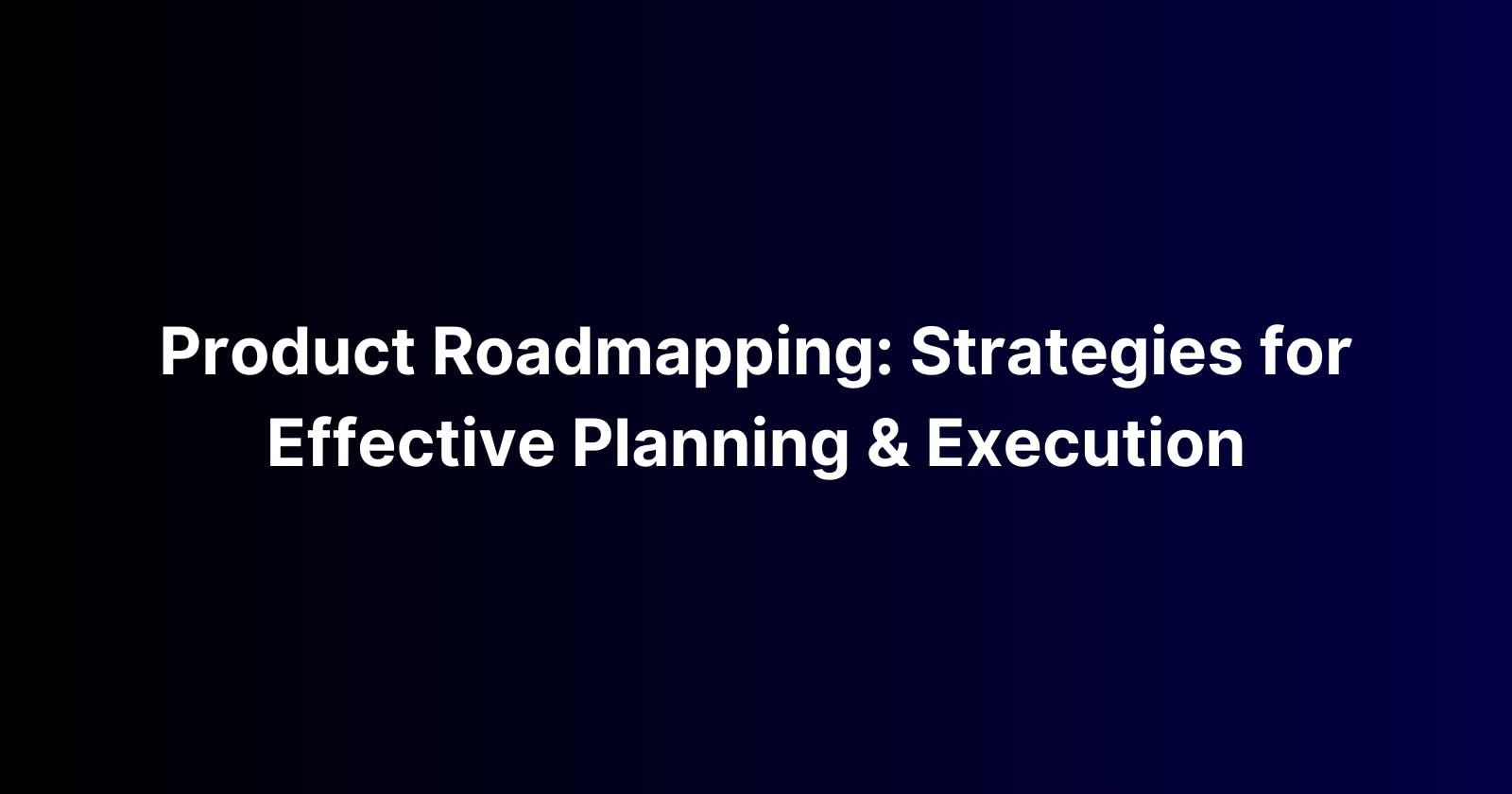Product Roadmapping: Strategies for Effective Planning and Execution
Navigating the Journey from Concept to Market Success with Proven Roadmapping Techniques and Tactics
Product roadmapping is a critical aspect of product management, serving as a strategic tool for planning and executing product development initiatives. A well-defined product roadmap aligns teams, communicates the product vision, and guides decision-making throughout the development lifecycle. In this blog post, we'll delve into strategies for mastering product roadmapping to ensure effective planning and execution.
Understanding Product Roadmapping
Before diving into strategies, let's define what a product roadmap is and its significance in the product development process.
A product roadmap is a visual representation of the high-level strategic goals and initiatives of a product over time. It outlines the direction and vision for the product, depicting key milestones, features, and deliverables. Product roadmaps come in various forms, including timelines, Gantt charts, and thematic roadmaps, depending on the needs of the organization and the complexity of the product.
Importance of Effective Roadmapping
Effective product roadmapping is crucial for several reasons:
Alignment: A well-crafted roadmap ensures that all stakeholders, including product managers, developers, designers, and executives, are aligned on the product vision and priorities.
Communication: It serves as a communication tool to articulate the product strategy and convey the rationale behind certain decisions to both internal teams and external stakeholders.
Decision-making: A roadmap helps in prioritizing features and initiatives, enabling teams to make informed decisions based on strategic objectives and market needs.
Flexibility: While providing a long-term vision, a roadmap should also be flexible enough to accommodate changes in market conditions, customer feedback, or internal priorities.
Now, let's explore some strategies for product roadmapping:
Strategies for Effective Product Roadmapping
1. Define Clear Goals and Objectives
Before creating a roadmap, it's essential to establish clear goals and objectives for the product. These goals should be aligned with the overall business strategy and address the needs of the target audience. By defining clear objectives, you can ensure that the roadmap focuses on delivering value and solving the right problems.
2. Prioritize Initiatives
Not all features and initiatives are created equal. Prioritize initiatives based on their impact on the business goals, user needs, and technical feasibility. Techniques such as the MoSCoW method (Must have, Should have, Could have, Won't have) or value vs. effort matrix can help in prioritizing features effectively.
3. Maintain a Balance Between Short-term and Long-term Goals
A product roadmap should strike a balance between short-term deliverables and long-term strategic objectives. While short-term goals focus on addressing immediate needs and delivering value quickly, long-term goals ensure that the product remains competitive and meets evolving market demands.
4. Involve Cross-functional Teams
Product roadmapping is not a solo endeavor; it requires collaboration across different teams and departments. Involve cross-functional teams, including product management, engineering, design, marketing, and sales, in the roadmap planning process. This ensures that diverse perspectives are considered, and everyone has buy-in into the product strategy.
5. Iterate and Adapt
A product roadmap is not set in stone; it should evolve over time based on feedback, market changes, and new insights. Regularly review and iterate on the roadmap to incorporate lessons learned, adjust priorities, and seize new opportunities. Embrace an agile mindset, where adaptation and continuous improvement are valued over rigid adherence to the plan.
Diagram Ideas
To complement the strategies discussed above, here are some diagram ideas that can enhance the visualization of your product roadmap:
Timeline Roadmap: Visualize the product milestones, releases, and key deliverables over time using a timeline-based roadmap.
Gantt Chart: Illustrate the dependencies between different tasks and initiatives, highlighting the project timeline and resource allocation.
Thematic Roadmap: Organize initiatives into themes or categories based on strategic objectives, customer segments, or product areas.
Kanban Board: Use a Kanban-style board to visualize the progress of individual features or user stories as they move through different stages of development.
Risk Matrix: Identify potential risks and uncertainties associated with different initiatives, categorizing them based on likelihood and impact.
By incorporating these diagram ideas into your product roadmapping process, you can create visual representations that are not only informative but also engaging and actionable for your team.
Conclusion
Mastering product roadmapping is essential for product managers and teams to navigate the complex landscape of product development successfully. By understanding the significance of effective roadmapping, defining clear goals, prioritizing initiatives, involving cross-functional teams, and iterating on the roadmap, you can create a roadmap that serves as a guiding light for your product journey. Combined with visual diagrams, your roadmap becomes a powerful tool for aligning teams, communicating strategy, and driving product success.
